Competitions & Contests
Visit the “Competitions & Contests” student page
Want to have a competition in your class, or help your students to enter a contest? Whether you create your own contest or have your students enter one that already exists, here are some tips for getting every student involved and engaged:
-
Plan ahead.
Contests and competitions that are already established follow similar timelines from year to year. Take a look at the one you think you’d like your kids to try and plan backwards from when the submissions are due, so that you are sure to provide enough time for students to really dig in. Spreading the process out over time also makes it less overwhelming for students — and for you! -
Use a model.
If you are going to create your own competition, take a little time to review the structures and submissions that established competitions have in place. Consider the timeline, the types of submissions that are applicable, the resources provided, and the type of work required of students. Modify the options as needed to fit the needs of your students, the time you have available, and the focus of your competition. -
Make working on entries a regular part of class.
Maybe you’re going to give students a month to research and another month to complete their entries. Create a time in class, maybe 20 minutes once a week, where you can check in with students on how their work is going. Give the class time to share their struggles, but also to share good ideas they’ve had or “a-ha” moments in their work, so that students are learning from each other. If a regular block of time for the whole class isn’t a good fit, considering scheduling mini-group check-ins, where 3-4 students gather with you to the side and have a quick discussion of their progress to that point, ask questions, and share ideas. -
Use all tools to your advantage.
Seek out tools provided by the competition (or one similar to the one you’re holding). Whether you are participating in an existing contest or doing one of your own, most contests post winning submissions from prior years. Review these submissions together with students in class — have students analyze and compare submissions and consider what might have made them “winners.” Students can use these insights to inform their own work. -
Use your community.
Think about the businesses and organizations in your area. Do they have experts that might consider working with your students, speaking with your class, or judging submissions? More than likely, the answer is yes! Reach out to the organizations whose missions or products are most in line with the topics your students are working with and ask how they would be willing to engage with your class. -
Build a tradition.
When you have students work on a competition or contest year after year, students in other grades will hear about the experiences of those who came before them and begin to look forward to getting their chance to try. One way to share experiences is to have current students present their submissions to kids in other grades. This not only will build presentation and communication skills but will also help build anticipation in the students who might get to participate in the future!
Competition Ideas
Want to run your own competition? Here are some sample competition problems to get your thinking started:
- Imagine there is a new source of energy that could solve a problem in your community. Describe the energy — what is it? What does it do? Describe the problem. What is it? Why is it an issue? Then, explain how the new source of energy solves the problem. How will it work? What will need to be built? What will be the drawbacks of using this new source of energy?
- Many Americans struggle to live a healthy life. Imagine that your school was chosen to be a model of healthy lifestyle decisions for other schools all around the country. What policies in the school would need to change? How would students in the school model a healthy lifestyle? What changes in the school structure (the building, the way time is used) would need to be adjusted, and how should they be changed? What parts of the model would be easily repeatable and which ones would be more challenging for other schools to adopt? Why?
- A long-term impact of severe weather can be damage to the power grid, leaving homes and communities without electricity. Imagine that your community was chosen to create a model of a power grid that could not be disrupted by weather. What would be built? How would it work? How would it be different from the system in your community today? What are the positives and negatives of your new system?
- A new plant that generates electricity is going to be built in your community. The community must determine where the plant will be located, what energy source it will be run with, and how the plant will be integrated with the community. Describe what the community should request, and explain why their request is the best choice for both the plant and the community.
ABOUT US
Get Into Energy / Get Into STEM is a ground-breaking program designed to build awareness among students, parents, teachers, guidance counselors, and others about the value of STEM (Science, Technology, Engineering, and Mathematics) education and the excellent career opportunities available in the energy industry.
Get Into Energy / Get Into STEM is managed by the Center for Energy Workforce Development (CEWD), a non-profit consortium of electric, natural gas, and nuclear utilities and their associations.
CONTACT US
Email: staff@cewd.org
Phone: 202-638- 5802
Fax: 202-508- 5030
Address:
CEWD
701 Pennsylvania Ave. N.W.
3rd floor
Washington, DC 20004-2696
© 2024 Center for Energy Workforce Development. All Rights Reserved.
